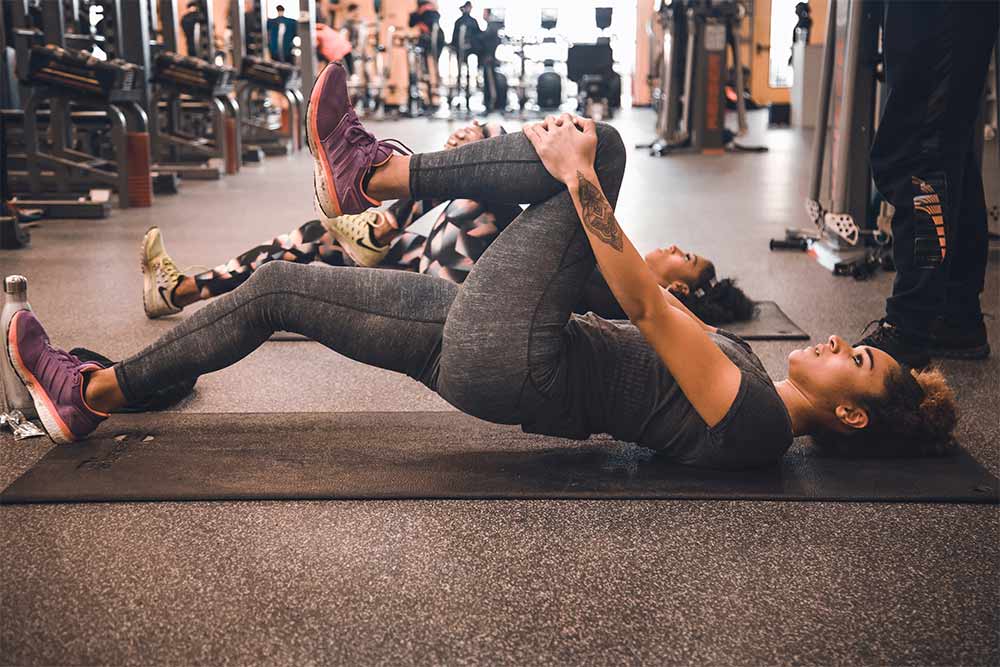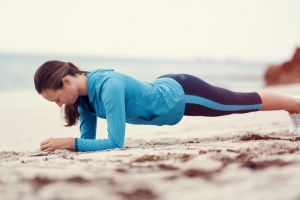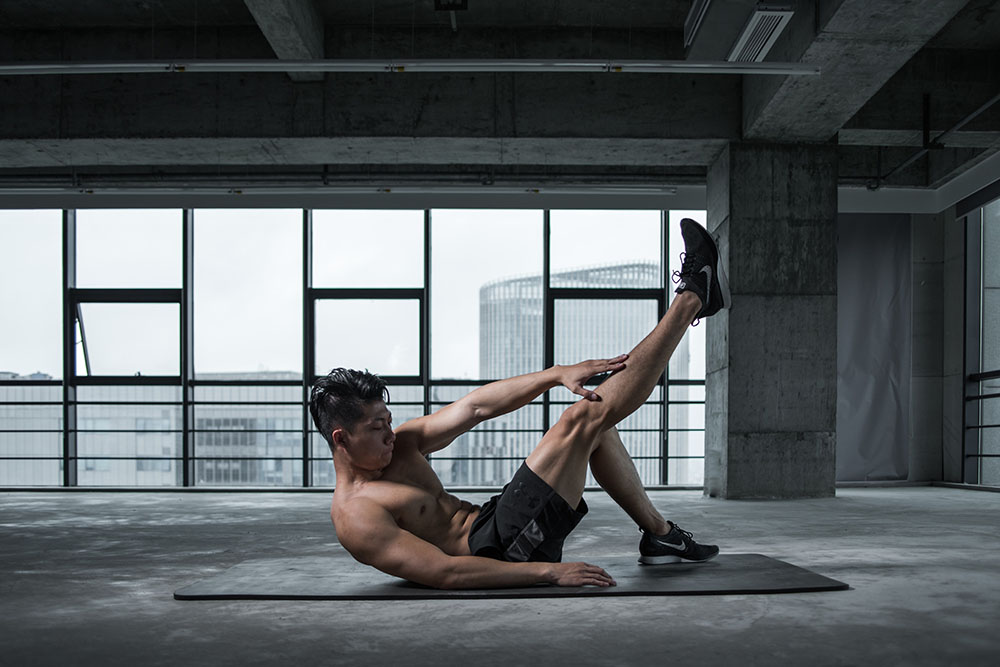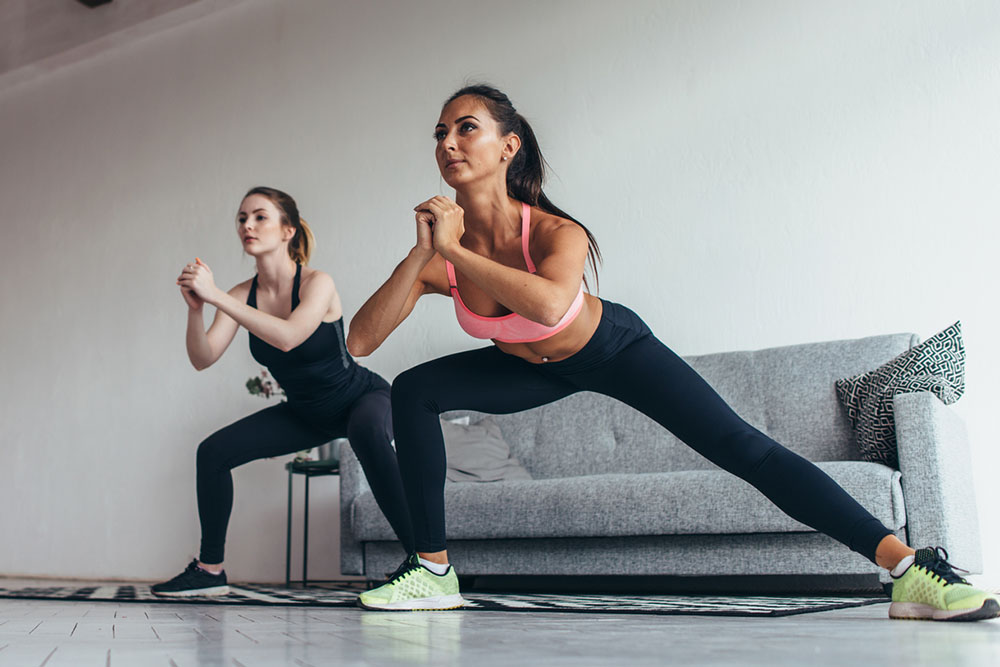The Best Glute Exercises: How to fire your glutes!

Alyssa Bialowas
About Your Glutes –
 The gluteus maximus is located in the buttocks and is connected to the coccyx/tailbone. This muscle is responsible for the movement of the hip and thigh, and also serves crucial body mechanics in sport and physical activity.
The gluteus maximus is located in the buttocks and is connected to the coccyx/tailbone. This muscle is responsible for the movement of the hip and thigh, and also serves crucial body mechanics in sport and physical activity.
The glutes have three mains functions –
Force production – Running, throwing, jumping, tackling, due to the powerful extension of the hips.
Hamstring safety – Hamstrings are also hip extenders, and the gluteus maximus works to reduce the workload of hamstrings.
Knee stability – The gluteus medius and minimus are responsible for protecting an athlete’s ACL. These muscles pull on the long ligament that runs down the outside of the thighs called the Tensor Fasciae Latae. Strong glute muscles keep this ligament tight, making the knee joint will be more resilient to landings, cuts, and rotation.
There are three main gluteus muscles –
- The gluteus maximus
- The gluteus minimus
- The gluteus medius
The primary role of the gluteus maximus is to extend and externally rotate the hip. The gluteus minimus and medius assist in abducting the leg away from the midline of the body. The gluteus maximus is the main muscle that pushes your leg back when you walk, and your minimus and medius are prime movers during walking, particularly when the feet are in contact with the ground.
Related Article: 5 Creative Hip Strengthening Exercises
In The Literature –
Physical health benefits that can be achieved through resistance training include muscle strength and tone, protecting joints from injury, weight management and body composition, and increased muscle to fat ratio. Previous studies indicate increased gluteus maximus strength through resistance training. More research is needed to target the exercises that lead to gains in the gluteus maximus and hamstring group.
McCurdy et al. (2018) set out to compare the gluteus maximus and hamstring group electromyographic (EMG) activation levels among selected weight-bearing resistance exercises in athletes.
The Study
 The participants in this study were adult females who had previous experience with resistance training. Participant strength was assessed using the bilateral squat, the modified single-leg squat, and the stiff-leg deadlift, to determine the testing load for all lifts. After 48 hours of rest, surface EMG was collected, and the equipment used to collect EMG also collected synchronized 3D hip and knee motion. The maximum voluntary isometric contraction was determined for the gluteus maximus and hamstring group to normalize the EMG data.
The participants in this study were adult females who had previous experience with resistance training. Participant strength was assessed using the bilateral squat, the modified single-leg squat, and the stiff-leg deadlift, to determine the testing load for all lifts. After 48 hours of rest, surface EMG was collected, and the equipment used to collect EMG also collected synchronized 3D hip and knee motion. The maximum voluntary isometric contraction was determined for the gluteus maximus and hamstring group to normalize the EMG data.
Participants exerted three repetitions in all three exercises, and their results were recorded to determine the weight-bearing resistance (McCurdy et al. 2018).
Results
Gluteus maximus EMG was significantly greater than hamstring group EMG on the bilateral squat, modified single-leg squat, and stiff-leg deadlift.
Takeaway
Comparing the activation of the two muscle groups in all exercises, the gluteus maximus seems to be the primary muscle recruited. The modified single-leg squat produced the greatest gluteus maximus and hamstring group activation. It is beneficial to include this exercise in training programs.
The Best Glute Workout –
The following exercises will increase lateral stability, pelvic stability, and eccentric control. These exercises work by generating power through extension.
Exercises That Target Your Gluteus Maximus
1. Bridge with a band
Using a band with this exercise is a bigger challenge for your glutes. Place a mini band around your calves. Lie on your back and lift your hips into a bridge position. While keeping tension on the band, tap your hips down to the floor and then lift back up. Keep a straight spine and move primarily from the hips. Perform 15-20 repetitions.
2. Elevated plank leg lift (with a band)
Place the band around the calves. Rest your hands on a bench/step, directly under your shoulders. While maintaining a plank position, squeeze your glutes as you alternately lift each leg. Complete 12-15 repetitions with each leg.
3. Reverse lunge with dumbbell
Cup the head of a dumbbell in both hands and hold it vertically in front of your chest, elbows pointing down. Step back with your right leg and lower your body until your front knee is bent 90 degrees. Pause, and then push your body back to standing. Do 10 to 12 reps on one side before switching legs and doing the same number on the other side.
4. Single-leg squat
From a standing position, raise one foot off the floor. You should be looking directly forward, with your chest up, knees and hips slightly bent, and your back straight. Descend into a squat by flexing your hips and knee. As you squat, extend the non-working leg forward. Descend slowly, paying close attention to balance and proper movement mechanics, going as far as your flexibility allows.
Hold the bottom position briefly and then return to the start by extending through the hips and knee, driving through the heel of your working foot.
Exercises That Target Your Gluteus Minimus and Medius
1. Side plank with clamshell
Lie on your side with your elbow under your shoulder and your hips stacked. Keep the bottom knee on the floor and push up into a modified side plank. At the same time, externally rotate your top hip. Slowly drop the top knee down to the bottom knee to close the clamshell as you tap your bottom hip to the floor. Repeat 12-15 reps, then flip over to the other side and repeat.
2. Side balance leg circles
Place your hand on the floor, directly under your shoulder. Place your bottom knee under your hip. Lift your top leg and line your foot up with your top hip. While moving from the hip, draw 10 small circles in one direction, and then reverse the circle for another 10 repetitions. Switch sides and complete another set with the other leg.
Related Article: Muscle Strength and it’s Relationship to Bone Health
Reference
McCurdy, K., Walker, J., & Yuen, D. (2018). “Gluteus Maximus and Hamstring Activation
During Selected Weight-Bearing Resistance Exercises.” Journal of Strength and
Conditioning Research, 32, 3, 594-601.
You Might Like:














